|
|
Whitby West Cliff from across the harbour, the buildings on the Battery and along Pier Road have changed since this photograph was taken. Captain Cook’s statue is present above Khyber Pass but the Whalebones are missing. Sandsend and the cliffs are seen in the distance, from a postcard posted in 1931.
Image courtesy of Ken Johnson.
Skinningrove Ironworks. At the date of this photograph, the tap hole was opened by hammer and crowbar; a tough and dangerous task. Although “wind” or (blast) was reduced in pressure, the molten iron could burst out of the taphole with some force. The clothing of the furnacemen did not give any protection. Safety didn’t figure in the good old days. Above the men the large diameter pipe (Bustle Main) carried the hot blast, a small pipe (Gooseneck) leads down to the “tuyere” by which the hot “blast” entered the Furnace.
Image (from a glass plate negative) courtesy Dave Mcgill.
A coloured postcard of the Cliff Lift at Saltburn, replacing the orignal Vertical Lift in 1884; viewed from the Pier which was some 1,500 feet long at this date. The slender gas lamps on the pier look far too fragile for being exposed to the North Sea Storms.
”Talk of the Town” – Saltburn’s Free Monthly Magazine has further information regarding the lift: ”Birmingham businesses were involved in the provision of machinery and cables. Tangye Ltd representative was George Marks (later 1st Baron Marks of Woolwich) who was responsible for the design and construction of the railway. The railway began operating in June 1884 proving very reliable, safe and convenient. The Cliff Lift is the oldest operating water balanced system in Great Britain and continues to be very popular with visitors and locals. The original Otto Gas Engine was replaced with a DC Generator in 1913 and adapted to a mains supply in 1930. The track was re-laid to a slightly wider gauge during the winter of 1921/22. Saltburn and Marske Urban District Council purchased the railway in 1930.” Since then the Cliff Lift has been maintained by Langbaurgh Borough Council and latterly by Redcar & Cleveland Borough Council.
Image courtesy of Ken Johnson and additional information courtesy of Cath and Tony Lynn for ”Talk of the Town” Saltburn.
A hand painted postcard of Saltburn Valley Gardens, The bandstand is seen on the left; but the eye is drawn to the Saltburn Bridge. Built in 1869 by Gilkes Wilson of Middlesbrough, Callum Duff tells us: ”The official name for the bridge across the valley was simply, ‘Saltburn Bridge’. The local nickname for the structure became the ‘Ha’penny Bridge’ named after the toll for each pedestrian crossing it.”
Image courtesy of Ken Johnson and thanks to Callum Duff for the update.
This is one of 40 views given away free with Wood-Milne Shoeshiners at three shillings four and a half pence a tin; what a lovely peaceful scene. The boats in the foreground are square sterned cobles , and one double ender with lug sail hoisted; a larger schooner is tied up to the quay. Across the harbour is St Michael’s Church, other ancient buildings along the harbourside were all demolished, as was the Angel Vaults on Dock End.
Image courtesy of Joyce Dobson.
An atmospheric hand coloured postcard view of Whitby harbour. The two craft on the left appear to be ketch rigged fishing yawls, with two lug sailed cobles further up harbour. The information with the card states Whitby Regatta 19th August 1925.
Image courtesy of Ken Johnson.
Page 8 of 8« First«...45678
|
|
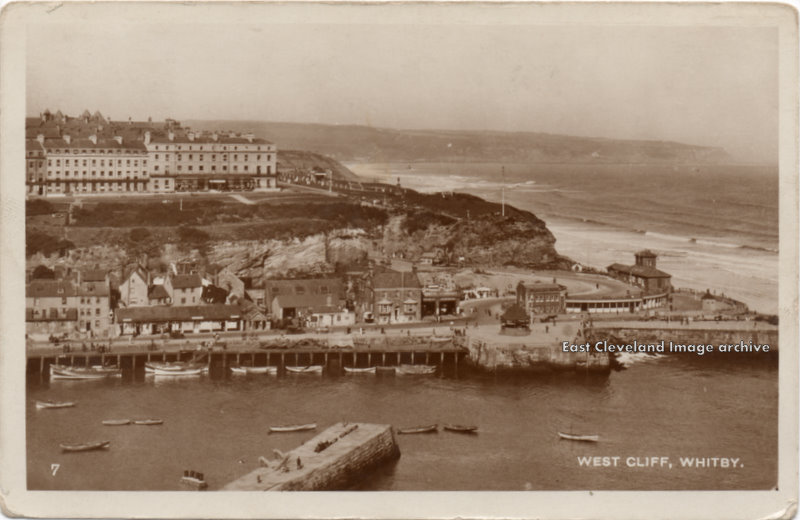
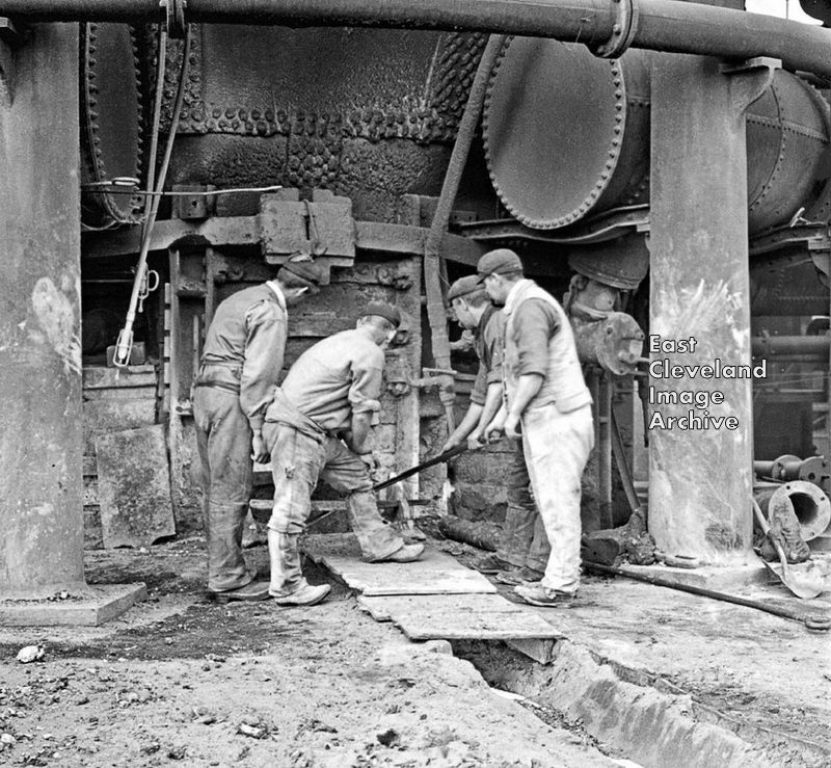
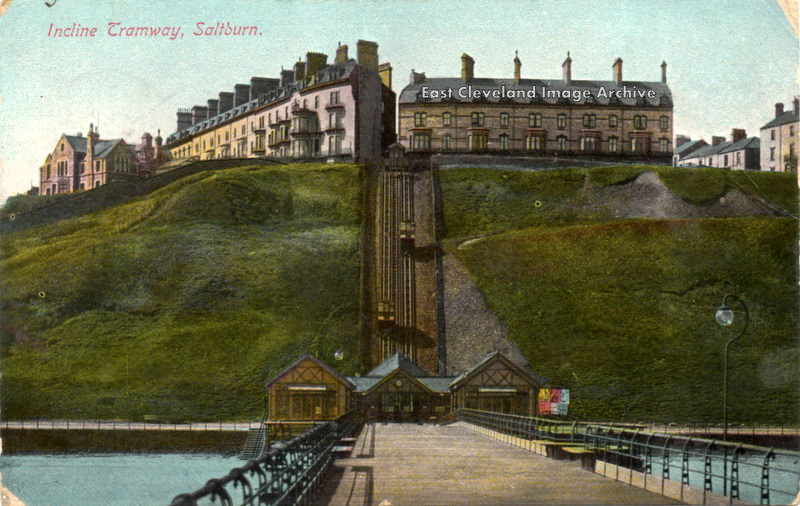
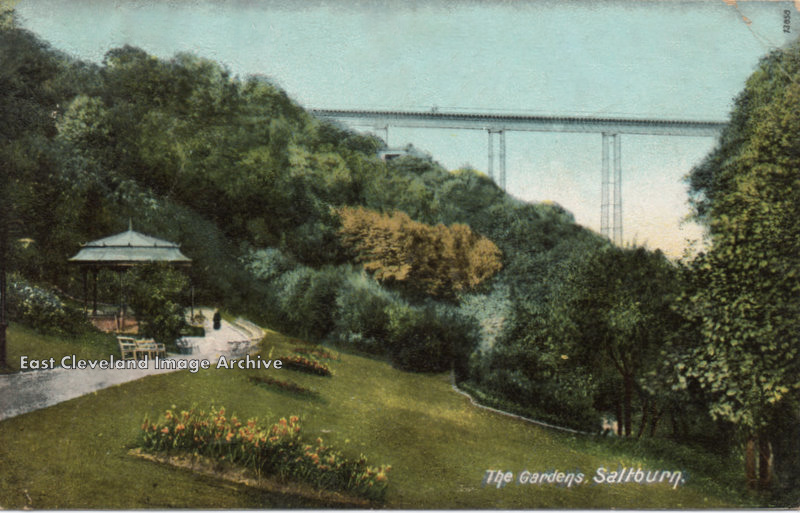
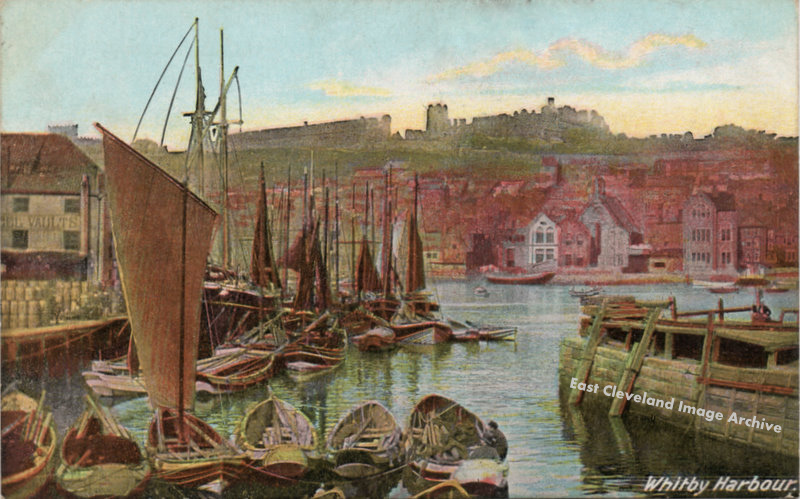
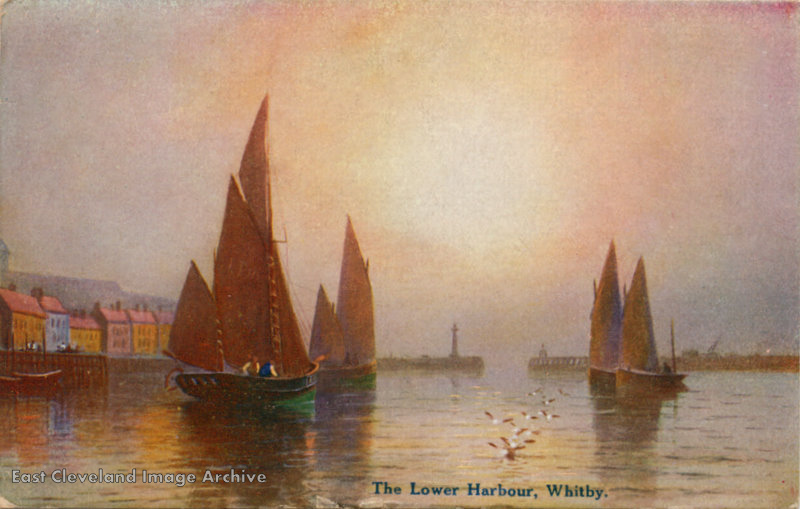
Recent Comments